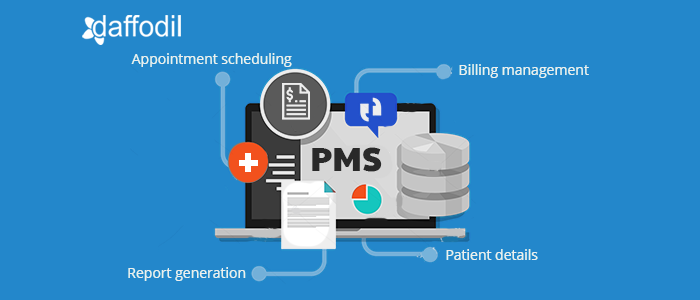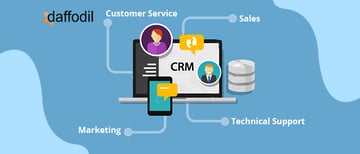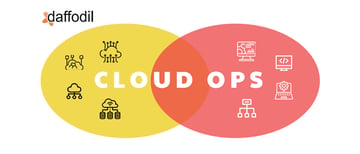
The COVID-19 pandemic is driving the healthcare system to the limit. The rapid rise in the demand for healthcare facilities and providers has burdened the system, making it unable to operate with absolute efficiency.
To deal with the tough times, the only solution that healthcare providers (practitioners and health facility organizations) have is to manage their patients and facilities competently. By automating some of the significant processes (like appointment scheduling), managing patient information with compliance, insurance claim settlement, patient & billing management, etc., healthcare providers can make ways for providing better care facilities.
Today, Healthcare Organizations (HCOs) confront challenges in managing tasks that are repetitive, require follow-ups (or are long-term), and need to be compliant with the healthcare standards. Considering these challenges in the system, many healthcare organizations are investing in a smart Practice Management System.
A Practice Management System (PMS) is a software application that enables HCOs to frequently capture patient demographics, schedule appointments, automate bills & reports generation, maintain insurance payors, and more. Depending upon the scope of healthcare services, a PMS can be developed for managing varied services.
Now that we had an overview of what a PMS is and what it can do for a clinic, hospital, or any healthcare organization, let’s understand some of the high-end benefits of a PMS.
- Streamline Processes and Workflows
In a dynamic care environment, a PMS helps to efficiently manage the processes and workflows that govern the healthcare system. This includes tasks that have a direct impact on clinical throughput and can achieve quality patient outcomes.
With a Practice Management System, the HCOs have the benefit of reducing errors and redundancies, which further helps the staff to operate efficiently. This means better staff handling and managing more patients on time.
- Automation of Standard Tasks
A PMS helps in smart management of staff time by automating some of the standard tasks. For example, instead of making calls to patients and reminding them of their appointment with the doctors, an automatic reminder can be set-up wherein the patients are informed a few days or hours before the appointment. Similarly, an alert can be triggered automatically to the inventory management team, informing them about insufficient supplies so that the inventory can be managed timely. This saves significant time for the workforce at the healthcare organization, which can be utilized in other qualitative tasks.
- Improved Billing & Reporting Cycle
The electronic billing system is fast and comprises complete details of the patients. This usually links the medical reports, insurance policies, and other documents all together, ensuring that everything about the patient is gathered in one place. Integration of electronic health records of patients sorts the billing process and also makes the insurance reimbursements fast.
- Follow Healthcare Compliance
Practice Management System helps healthcare organizations to perform every task that complies with the standard medical & care delivery system. For example, you can ensure that healthcare information is securely saved and accessed, following HIPAA compliance.
- Patient and Provider Satisfaction
With a patient management system, healthcare providers can ensure patient engagement. A PMS can take care of this right from the scheduling process. Texts, emails, reminders, calls, etc. help the patients to adhere to medical processes, which keeps them connected with healthcare providers and makes them believe in their services as well. A satisfied patient is the goal of providers and PMS helps to reach there effortlessly.
ALSO READ: Healthcare Delivery Challenges and How PMS helps to Overcome them?
The advantages of a practice management system depend upon its scope. Whether you're building a PMS for a clinic or a hospital defines how many features and benefits it's going to offer. However, there are some must-haves for a PMS that should be available in a solution, irrespective of its scope. Let's have a look at some of the features that must be there in a qualitative PMS solution.
Some Essentials of Practice Management Software:
1. Appointment Scheduling
One of the most important components of a PMS is its ability to schedule patient-physician meetings. There can be one or multiple physicians within a care center and thus, there should be a set-up to book an appointment according to their availability. During appointment booking, the PMS solution can take up patient’s data such as service type, take physician preference (if any), take insurance availability details, patient’s zip code (to align appointments with the nearest clinic or care center), etc.
Along with this, there can be a "schedule dashboard" that clearly defines the patient’s reason to be at the care center, if the patient has arrived on the date & time of arrival, since how long the patient is there (or waiting) in the clinic, the total time that the patient spent in the clinic, etc.
2. Patient EHR and other Documentation
Patient engagement is the key to their satisfaction. Managing their records, such as health updates, lab reports, billing & insurance details, demographics, prescription, etc. at one place helps to streamline processes and workflows, which ultimately results in patient satisfaction. Thus, the PMS must have the EHR integrated along with other documentation. For example, insurance details of the patients should be mentioned along with so that there is an ease for providers in claim management and the patients can get their treatment done without financial worries.
3. Inventory Management System
No matter if a PMS is built for a clinic or a multi-specialty hospital, managing inventory is a must-have. That's why during PMS software development, it is important to include an inventory management module in it. This takes care of the equipment and medications that are required for quality patient care and the execution of administrative processes.
4. Billing & Insurance Management
Managing finances that are related to patient billing and insurance claims is one of the prominent components of the healthcare system. Creating the right billing report is possible only when components related to patients’ treatment are well-integrated with the PMS. Along with this, for patients having insurance policies, there should be clear information available within the PMS for timely reimbursements.
By now, you must have acknowledged the benefits of a PMS for your HCO and what are the must-haves to manage the healthcare processes efficiently. The next question is, how to have a practice management system for your healthcare organization?
Well, there are two ways to have a PMS for your HCO; one, you can buy an off-the-shelf PMS solution, and two, you can build your own PMS application. But, first, you have to decide which one will work best for you. In the latter segment, we discuss the benefits of both options over one another, which leaves the ball in your court to decide, which one is better.
Build or Buy a PMS Software: What’s your Choice?
The decision to build or buy a PMS varies according to scope and budget of the solution. Let’s understand which one is more beneficial.
Buy it: The online market has a plethora of PMS solutions that can be purchased and implemented within an HCO at a certain cost. Although there is a recurring cost attached to it, the benefit is, it can be an instant solution to your requirements.
However, one of the major challenges associated with off-the-shelf PMS solutions is their integration with existing tech solutions of an HCO. Therefore, the integration of off-the-shelf PMS solutions with HCO processes might be complex, time-consuming, and expensive.
Moreover, such PMS solutions are developed for a wider user base and might comprise several features, more than what’s needed by a mid-sized HCO or a healthcare clinic.
Despite some of these shortcomings, buying a PMS can be a go-to option as it saves development time and offers support for technical & functional glitches. If that works for you, then it’s the time to start your research for a well-grounded PMS software for your healthcare organization.
Build it: One of the biggest advantages of building a practice management system is you can customize it according to the size, requirements, and budget of your healthcare organization.
When a PMS is tailored according to an HCO’s requirement, a simplified solution is received that has everything in place according to its users. Moreover, customization helps to overcome the challenges associated with integrations.
Now, the decision is yours, Depending upon HCO requirements, budget, integrations, and timeline, any of the above options to have a practice management system can be chosen.
Building a Custom PMS for your HCO: Getting Started
The scope of a PMS can be extended according to size, practices, physicians, and patients in a healthcare organization. But, all that you need is to understand what’s needed to operate the entire care delivery system with efficiency. You can either create a list of must-haves for your PMS or take expert-guidance to do so. In the latter case, you can have a 30-minute free consultation session with our tech-experts who will guide your way to PMS planning to development, and deployment phase.




